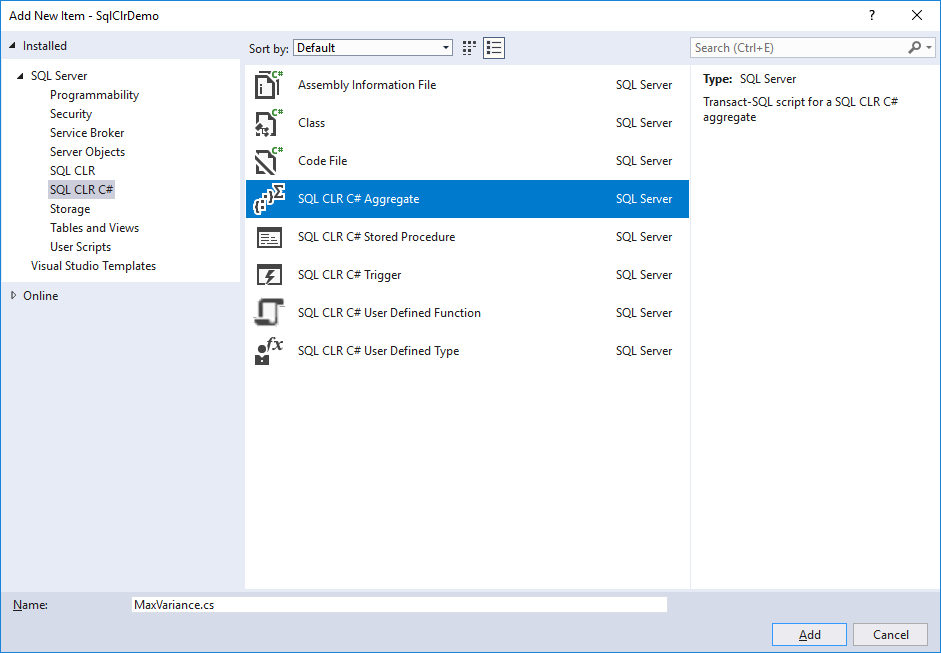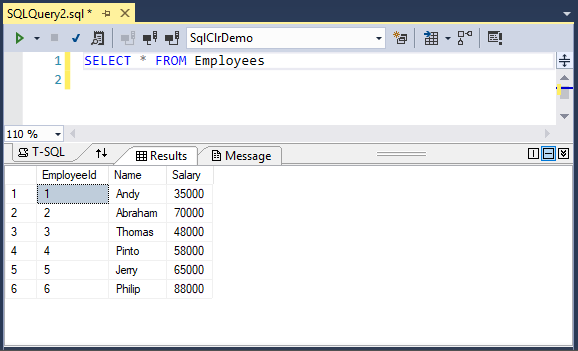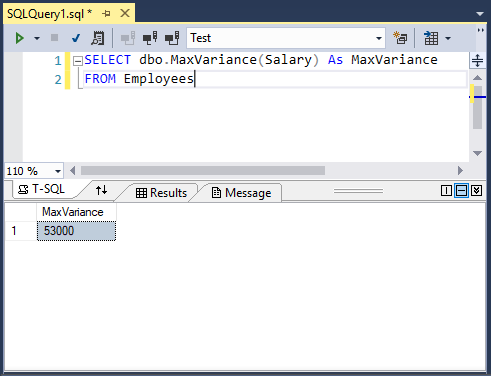SQL CLR CLR User-Defined Aggregates
Aggregate functions perform a calculation on a set of values and return a single value. T-SQL has a number of built-in aggregates, such as SUM, AVG, and MAX, etc.
- The SQL CLR features in SQL Server allow us to implement user-defined aggregates in .NET code and use them from T-SQL.
- At first, aggregates look and feel like functions because they accept and return values.
- The difference is that the argument passed to an aggregate is typically a column, and so each discrete value for that column gets passed in to the aggregate.
- It is the aggregate's job to update a variable, which eventually will be the return value, as each discrete value is passed to it.
Requirements
Aggregate classes must have the following four methods:
- Init
- Accumulate
- Merge
- Terminate
Init
- The
Initmethod is used to clean up as necessary from previous uses of this aggregate instance, allowing it to re-start a new aggregate computation. - It provides startup code, typically initializing a class-level private variable that will be used by the
Accumulatemethod.
Accumulate
- The
Accumulatemethod accepts a SQL type for processing. - It handles the processing of a discrete value into the aggregate value.
Terminate
- The
Terminatemethod returns a SQL type representing the result. - It returns the final aggregated value after all discrete values have been processed.
Merge
- The
Mergemethod accepts an object typed as the aggregate class itself so that it can be combined with the executing instance.
To create a CLR user-defined type, select Project > Add New Item menu option.

Select the SQL CLR C# from the list on the left pane, and choose SQL CLR C# Aggregate in the middle pane. It will add the default code for you, let's add the following code.
using System;
using System.Data;
using System.Data.SqlClient;
using System.Data.SqlTypes;
using Microsoft.SqlServer.Server;
[Serializable]
[SqlUserDefinedAggregate(Format.Native)]
public struct MaxVariance
{
// This is a place-holder field member
private int m_LowValue;
private int m_HighValue;
public void Init()
{
m_LowValue = 999999999;
m_HighValue = -999999999;
}
public void Accumulate(int value)
{
if ((value > m_HighValue))
{
m_HighValue = value;
}
if ((value < m_LowValue))
{
m_LowValue = value;
}
}
public void Merge(MaxVariance Group)
{
if ((Group.GetHighValue() > m_HighValue))
{
m_HighValue = Group.GetHighValue();
}
if ((Group.GetLowValue() < m_LowValue))
{
m_LowValue = Group.GetLowValue();
}
}
public int Terminate()
{
return (m_HighValue - m_LowValue);
}
// Helper methods
private int GetLowValue()
{
return m_LowValue;
}
private int GetHighValue()
{
return m_HighValue;
}
}
The MaxVariance aggregate calculate the difference between high and low values on any column. Let's build the application and Publish it or use the following T-SQL to register this aggregate.
CREATE AGGREGATE [dbo].[MaxVariance](@value INT NULL)
RETURNS INT
EXTERNAL NAME [SqlClrDemo].[MaxVariance];
GO
To test the custom aggregate function, we have an Employees table which contains the following data.

Now use the MaxVariance aggregate in the following T-SQL.
SELECT dbo.MaxVariance(Salary) As MaxVariance
FROM Employees
The result of this statement will show the difference between the high and low values found in the Salary column of Employees table.

